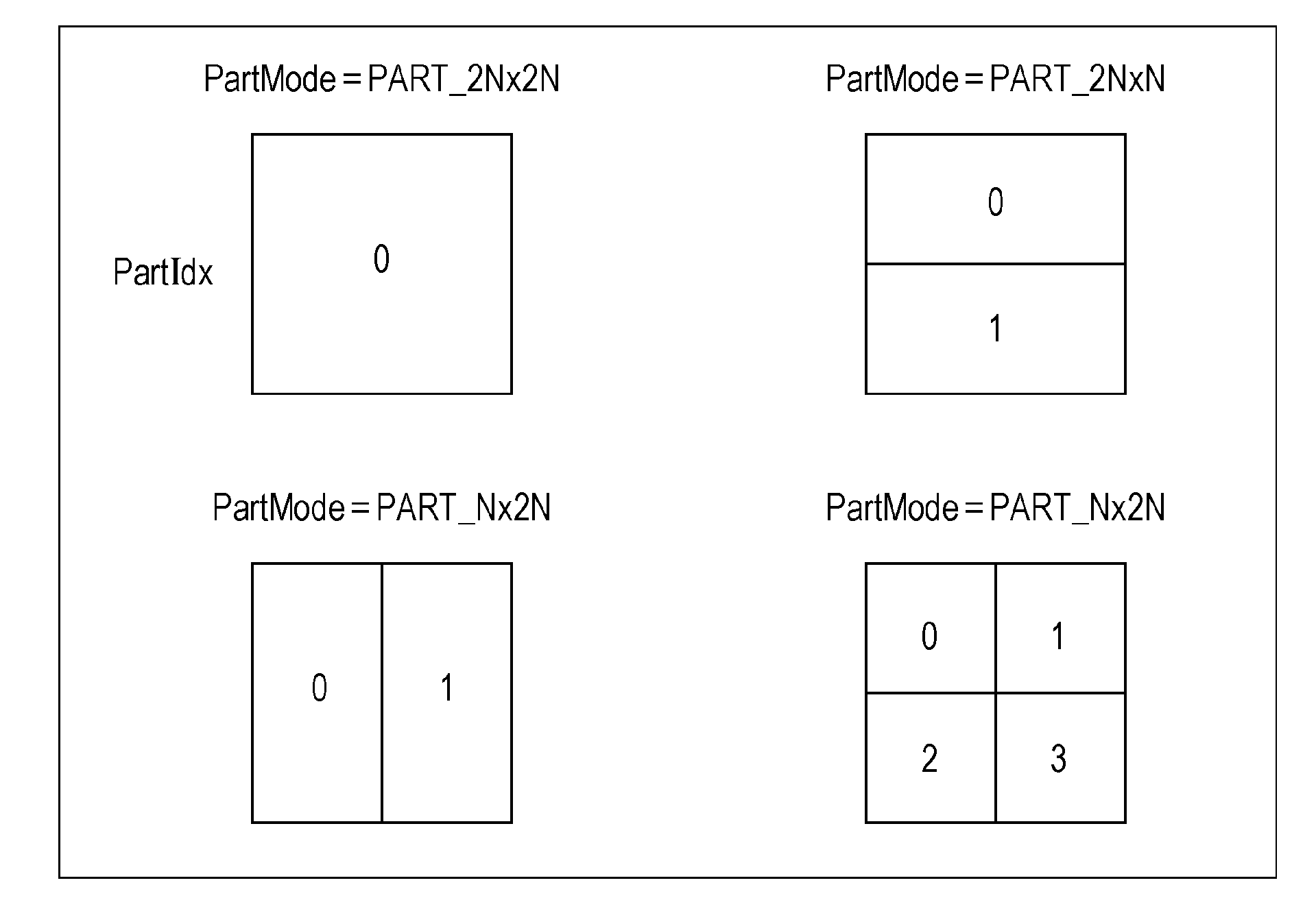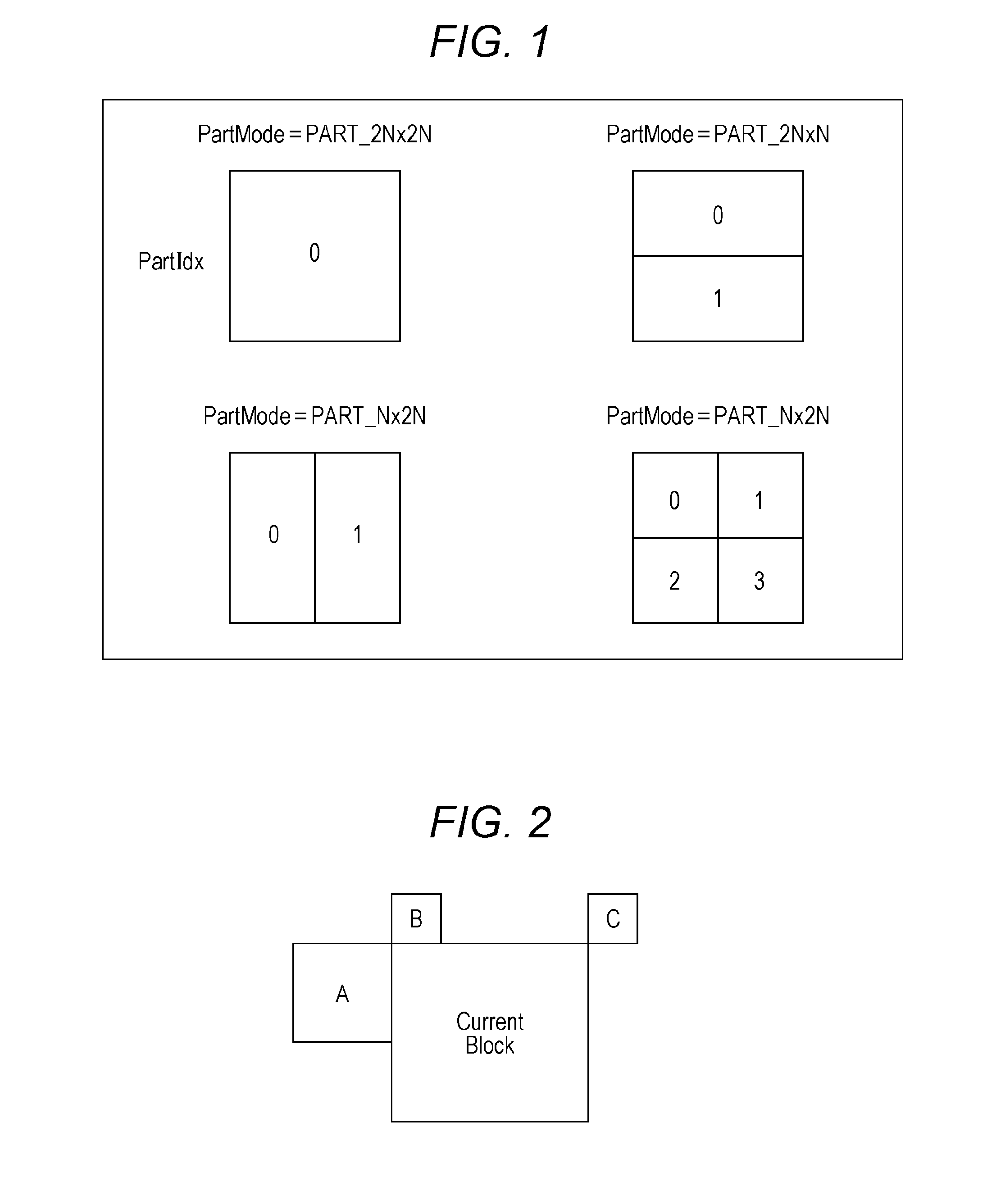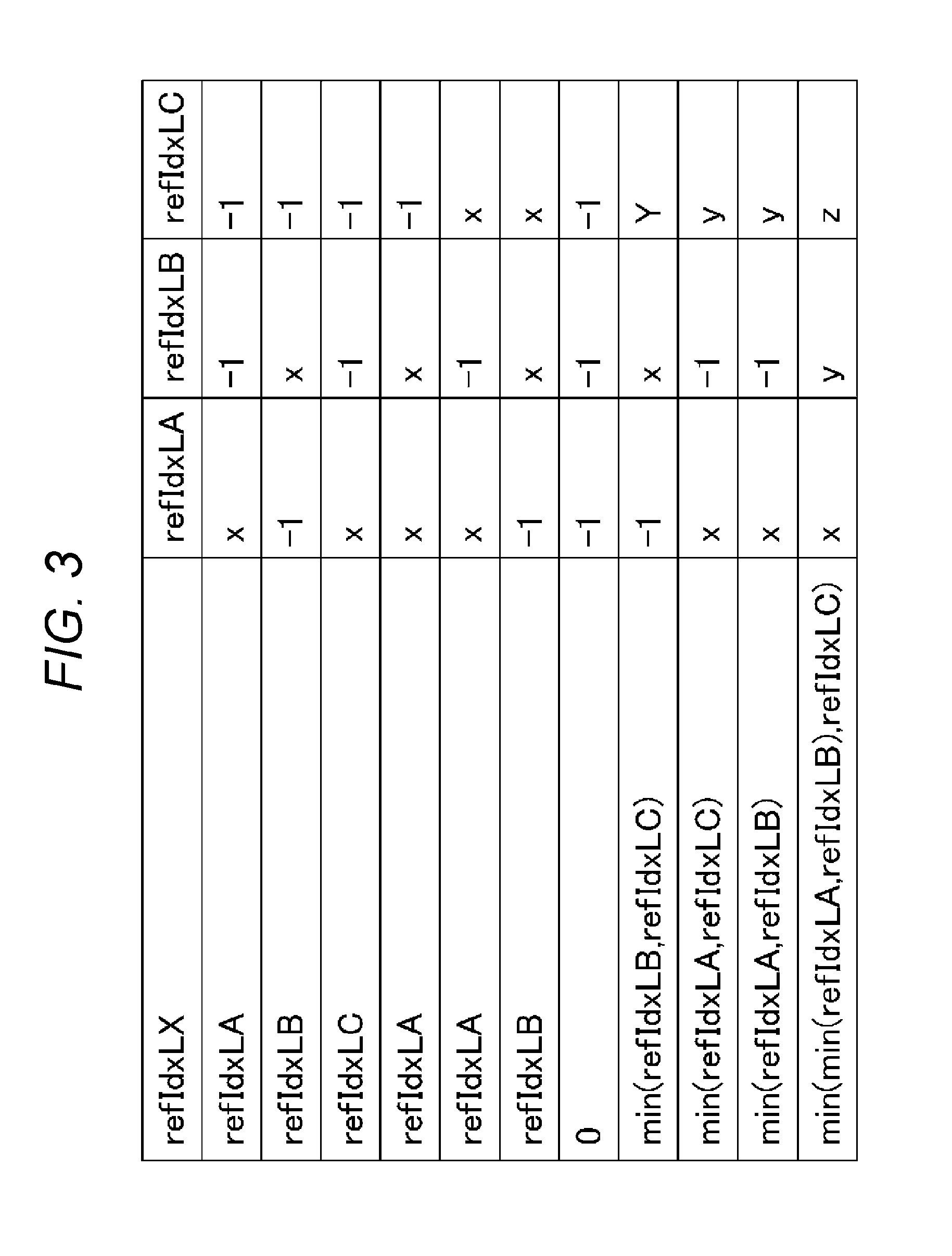Image processing device and image processing method
a technology of image processing and image processing, applied in the direction of signal generator with optical-mechanical scanning, color television with bandwidth reduction, etc., can solve the problem of not optimal setting the size of a macroblock to 1616 pixels, and achieve the effect of suppressing the decrease in encoding efficiency
- Summary
- Abstract
- Description
- Claims
- Application Information
AI Technical Summary
Benefits of technology
Problems solved by technology
Method used
Image
Examples
first embodiment
1. First Embodiment
[0156]In image encoding such as AVC (Advanced Video Coding) or HEVC (High Efficiency Video Coding), motion prediction using correlation in the temporal direction (between frames) is performed.
[0157]The AVC defines layered blocks such as macroblocks or sub-macroblocks as processing units of such a prediction process, and the HEVC defines coding units (CUs).
[0158]The CU which is also called a coding tree block (CTB) is a partial region of a picture-base image, which plays the same role as the macroblock in the AVC. The size of the macroblock is fixed to 16×16 pixels whereas the size of the CU is not fixed but is designated in image compression information in respective sequences.
[0159]For example, the largest size (LCU: Largest Coding Unit) and the smallest size (SCU: Smallest Coding Unit) of the CU are defined in a sequence parameter set (SPS) included in output encoded data.
[0160]Each LCU can be split into CUs of the smaller size that is not small...
second embodiment
2. Second Embodiment
Image Decoding Device
[0365]FIG. 31 is a block diagram illustrating a main configuration example of an image decoding device which is an image processing device. An image decoding device 300 illustrated in FIG. 31 is a device that corresponds to the image encoding device 100 of FIG. 11. That is, the image decoding device 300 decodes the encoded data (bit stream), which is generated through encoding a multi-view image by the image encoding device 100, according to a decoding method corresponding to the encoding method of the image encoding device 100 to obtain a decoded multi-view image.
[0366]As illustrated in FIG. 31, the image decoding device 300 includes an accumulation buffer 301, a lossless decoding unit 302, an inverse quantization unit 303, an inverse orthogonal transform unit 304, an arithmetic unit 305, a loop filter 306, a screen rearrangement buffer 307, and a D / A converter 308. Moreover, the image decoding device 300 includes a decoded picture buffer 30...
third embodiment
3. Third Embodiment
Point
[0422]In the case of multi-view images, the positions of images are offset between views so that a parallax occurs. Thus, when a block in the view direction is selected, even if a block at the same position is selected (referred to), the prediction accuracy of the predicted image may decrease and there is a possibility that it is not possible to create an appropriate predictive vector.
[0423]Thus, when a block in the view direction is selected in order to generate a predictive vector, a block at a shifted position is selected. That is, the predictive vector is generated using a vector of such a region that is located at the same position as the current region in a state where the position of an image of the same time as the current region is shifted.
[0424]The shift amount is calculated in a predetermined order from the parallax vector of the neighboring block. By using the same order in both an encoding-side device and a decoding-side device, the same predicti...
PUM
 Login to View More
Login to View More Abstract
Description
Claims
Application Information
 Login to View More
Login to View More - R&D
- Intellectual Property
- Life Sciences
- Materials
- Tech Scout
- Unparalleled Data Quality
- Higher Quality Content
- 60% Fewer Hallucinations
Browse by: Latest US Patents, China's latest patents, Technical Efficacy Thesaurus, Application Domain, Technology Topic, Popular Technical Reports.
© 2025 PatSnap. All rights reserved.Legal|Privacy policy|Modern Slavery Act Transparency Statement|Sitemap|About US| Contact US: help@patsnap.com



